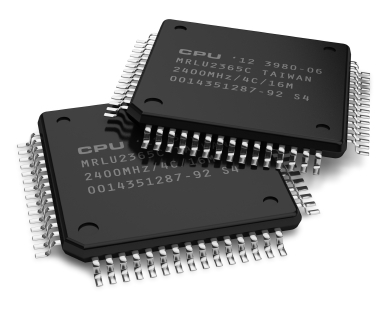‘We should stop designing perfect circuits’
October 8, 2013
[+]
Christian Enz, head of the EPFL Integrated Circuits Laboratory (ICLAB), says we should build
future devices with unreliable circuits, and adopt the “good enough
engineering” trend to reduce energy consumption and continue to reduce
transistor size.
Computer chips (credit: iStockphoto)
The problem: We are beginning to hit a wall on miniaturization. As transistors get smaller, they produce more mistakes, so hardware must be added and performance must be decreased, which cancels the benefits of miniaturization and increases energy consumption.
The circuits have become so dense that 100% error-free functionality is simply no longer possible, given the increase in manufacturing tolerances.
Imperfect circuits require less silicon area, so they consume less energy and are less expensive.
Enz’s team is working on “inexact” circuits as part of a SNSF project called “IneSoC*.” The group is building on work done at the CSEM (Swiss Center for Electronics and Microtechnology) as part of an international project undertaken with Rice University in Houston, Texas and Nanyang Technology University in Singapore.
EPFL’s Andreas Burg also works on defective chips, but rather than voluntarily putting errors into circuits, Burg studies ways of “making do” with errors that naturally occur during wireless communication.
Of course, this approach raises some questions that Enz answers.
Won’t unreliable chips adversely affect the performance of the device they’re in?
Circuits are generally resilient to a certain statistically small proportion of errors, with only a negligible impact on the final output. This isn’t true for all applications, but you can take a “good enough” approach for “perceptual” uses like audio and video playback. For example, any impact on image quality of a smartphone screen will be too small to be perceived. Human sight is an extremely robust system, one that automatically corrects any small errors.
Imperfect circuits do make a certain number of errors, but they nevertheless ultimately deliver almost the same performances as “perfect” circuits. So we replace simple no-fault circuits with “good-enough” circuits that were sufficient for the minimum requirements of a given application.
How do you build “inexact” circuits?
The crucial step is determining where you have room for error. We start by looking for spots on the circuits that are underutilized. For example, if you have a circuit dedicated to adding numbers and there aren’t too many decimal places in the numbers being added, we can try to get rid of the part of the circuit that handles floating-point operations (decimal places) and see what happens.
This sort of “inexact” approach will of course lead to lower numbers on quality metrics like signal-to-noise or image quality, but the result may still be “good enough.” This decimal-place technique is known as “inexact arithmetics”, while more generally, the approach is known as “good-enough engineering”.
Is it difficult to promote the “good enough” engineering in Swiss society?
Yes, because the average product designer hates the idea of getting rid of parts of his circuits and intentionally generating errors. So the standard approach today is to make sure the manufactured circuits correspond exactly to design specs. Our approach is thus completely new. It’s a paradigm change, one that is difficult to push through in a society that values perfect technology.
That said, the “good enough” approach has been getting some traction in the corporate sector, because chipmakers can’t see any real alternative. Intel, for example, is interested in “good enough” engineering. In addition, there are teams of research scientists working on it all over the world.
It’s not clear from the EPFL information how their algorithm would identify chips (or chip addresses) with potential defective areas , or how their algorithm identifies applications that can (or cannot) use the defective chips or chip addresses. For example, Photoshop could possibly use a potentially defective chip (or chip address range) for images, but not a spreadsheet. We’ve asked EPFL for further information and will update this article when we receive it. — Editor
(¯`*• Global Source and/or more resources at http://goo.gl/zvSV7 │ www.Future-Observatory.blogspot.com and on LinkeIn Group's "Becoming Aware of the Futures" at http://goo.gl/8qKBbK │ @SciCzar │ Point of Contact: www.linkedin.com/in/AndresAgostini
 Washington
Washington